LED lighting is a great choice for the environment for several reasons. Firstly, they are extremely energy-efficient, saving up to 90% more electricity than incandescent bulbs and 50% more than CFLs. Additionally, LED lights have a long lifespan of up to 50,000 hours, reducing the need for frequent replacements. They are also environmentally friendly, as they eliminate toxic elements like mercury and reduce carbon emissions. LED lights emit zero UV radiation, making them safer and healthier. Furthermore, they are durable, impact-resistant, and suitable for various settings, while providing quality illumination without attracting insects. Choosing LED lighting provides numerous benefits for environmentally conscious consumers.
Key Takeaways
- LED lights save up to 90% more electricity than incandescent bulbs.
- LED lights eliminate toxic elements like mercury, promoting eco-friendliness.
- LED lights have a lifespan of up to 50,000 hours, reducing replacements.
- LED lighting greatly reduces electricity consumption, lowering carbon footprint.
- LED technology effectively repels insects, enhancing outdoor environments.
Energy Efficiency
LED lighting stands out for its exceptional energy efficiency, saving significant amounts of electricity compared to traditional incandescent and CFL lights. With LED lights saving around 90% more electricity than incandescent bulbs and about 50% more electricity than CFLs, their impact on reducing energy consumption is significant. This reduction in energy usage not only leads to cost savings for consumers but also plays an important role in lessening the burden on electric power plants. By lowering the demand for electricity, LED lights help decrease the amount of fuel burned for electricity generation, subsequently reducing carbon emissions and lessening the overall carbon footprint.
The highly efficient nature of LED lights, with their focused light output, further contributes to their energy efficiency. This focused light not only provides better illumination but also ensures that less energy is wasted in dispersing light in unwanted directions. Overall, the environmental impact of LED lighting regarding energy efficiency is substantial and plays a key role in promoting sustainability.
No Toxic Elements
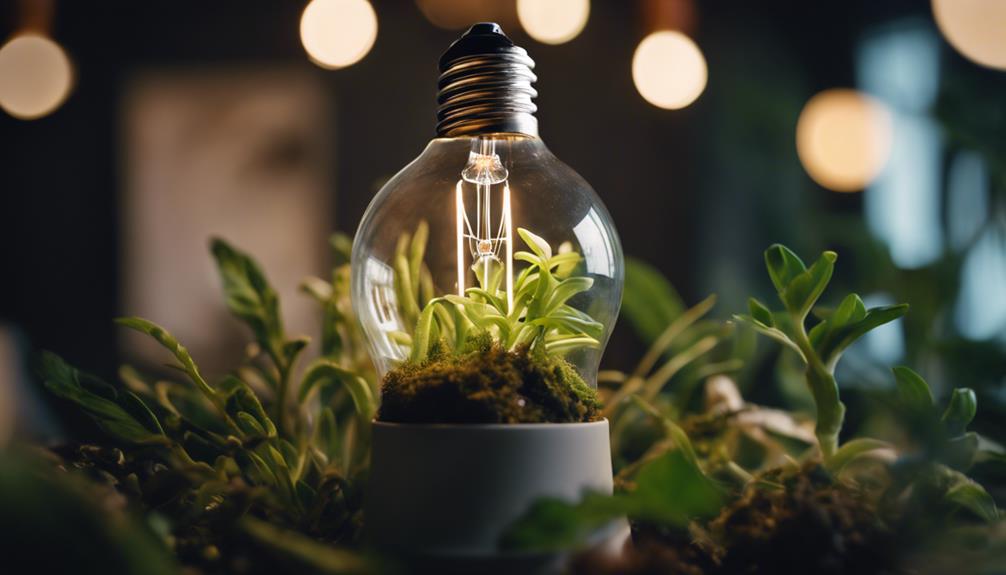
Switching to LED lights is vital in the effort to protect the environment from toxic waste contamination. The disposal of fluorescent lights requires special arrangements due to their toxic content, making LED lights a more environmentally friendly option.
LED lights are needed to eliminate the presence of toxic elements like mercury, which can have detrimental effects on ecosystems and human health. By opting for LED lights, individuals can actively contribute to reducing the risk of toxic waste contamination in the environment.
This shift to LED lighting not only guarantees a safer and healthier living space but also plays a significant role in promoting sustainability and eco-friendliness. LED lights indeed stand out as an environmentally conscious choice for lighting solutions.
Long Lifespan

With a lifespan of up to 50,000 hours, LED lights outlast traditional bulbs by a considerable margin. LED strip lights are known for their longer lifespan, making them a durable choice for lighting solutions. The extended lifespan of LED strip lights not only guarantees lasting lighting effects but also reduces the need for frequent replacements, leading to cost savings in the long run. This durability and longevity make LED lights a practical and eco-friendly option for both residential and commercial lighting needs.
| Benefits of LED Strip Lights | |
|---|---|
| Longer Life Span | |
| Cost Savings | |
| Lasting Lighting Effects |
Zero UV Radiation
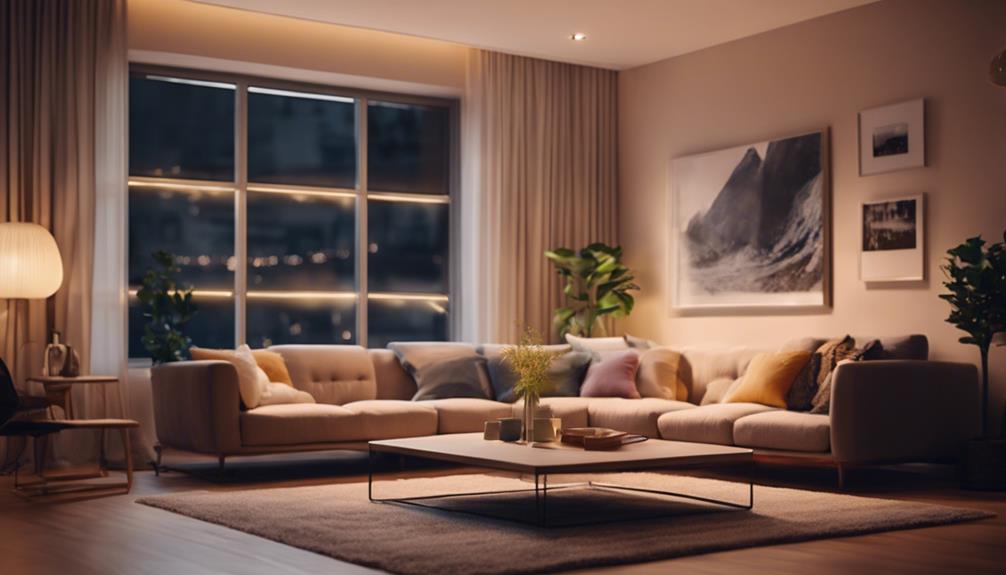
LED lights are a wise choice due to their zero UV radiation emissions, ensuring safety for both individuals and objects. This feature eliminates the need for additional UV-blocking filters, which are essential with traditional HID lights.
UV Protection Benefits
UV radiation poses a significant threat to both people and materials, but with LED lighting, this concern is completely eliminated. LED lights don't emit any UV radiation, making them a safe lighting option for indoor environments.
Unlike traditional lighting sources, LED lights don't require UV-blocking filters to protect against UV radiation. This feature makes LED lights ideal for preserving sensitive materials such as artwork and fabrics, ensuring their longevity.
Additionally, LED lights offer a safer alternative to HID lights that emit harmful UV radiation, reducing health hazards for individuals. By eliminating UV radiation, LED lights aren't only environmentally friendly but also contribute to a healthier and safer lighting environment for both people and materials.
Health Safety Concerns
The eradication of UV radiation in lighting sources like LED lights not only guarantees human health safety and protection for delicate materials but also reduces environmental impact.
LED lights emit zero UV radiation, making them ideal for environments where minimizing UV exposure is essential. Unlike traditional HID lights that emit UV radiation, posing health safety concerns and the risk of damaging artwork or sensitive materials, LED lights provide a safe environment without the need for UV-blocking filters.
This feature makes LED lights a preferred choice in settings where preserving health and safeguarding delicate items are top priorities. By choosing LED lights over traditional options, individuals can enjoy the benefits of illumination without compromising on health and safety.
Skin Damage Prevention
Skin damage prevention is crucial in environments where zero UV radiation is essential for maintaining healthy skin. LED lights emit zero UV radiation, offering protection against skin damage typically caused by UV exposure. Unlike traditional lights, LED lights don't pose a risk of skin aging or other UV-related issues. Opting for LED lighting creates a safer environment for skin protection and promotes healthier skin overall.
Durability

LED lights exhibit exceptional durability due to their solid-state technology, which enables them to withstand a variety of harsh environmental conditions. Here are three key points highlighting the durability of LED lights:
- Resistance to Harsh Environments: LED lights are more durable in challenging conditions, such as vibrations, corrosion, and moisture, making them highly reliable for outdoor use.
- Solid-State Technology: The solid-state technology in LED lights sets them apart from traditional lighting options, providing enhanced durability compared to fragile materials like glass or filaments.
- Enhanced Safety: LED lights, utilizing diodes instead of fragile components, offer increased safety in environments where glass hazards are a concern, ensuring a longer lifespan due to their durability.
Safety Features
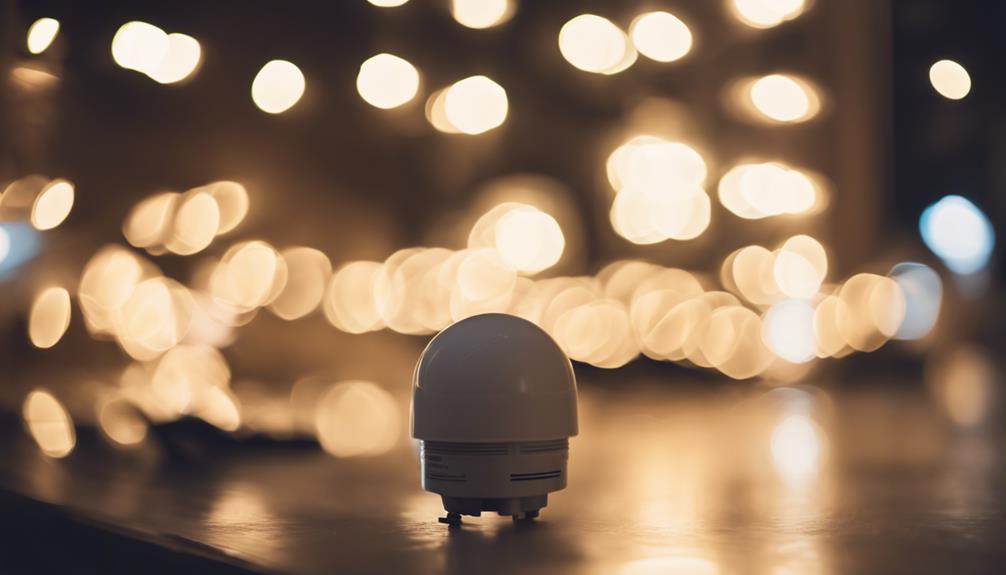
Incorporating advanced safety features, these lighting solutions provide peace of mind in various settings. LED lights stand out for their safety features, making them a safer option compared to traditional lighting sources.
One key aspect contributing to their safety is the absence of glass, which reduces safety hazards in case of breakage. This feature is particularly advantageous in environments where glass shards could cause harm.
LED lights are also impact resistant, ensuring they can withstand accidental knocks or harsh weather conditions, making them a reliable choice for various applications. Additionally, their sealed design and resistance to vibrations minimize the risk of serious injury, adding an extra layer of safety.
These qualities make LED lights ideal for use in food preparation areas where safety is paramount. Overall, the safety features of LED lighting make them a practical and secure lighting solution for a wide range of settings.
Low Heat Emission
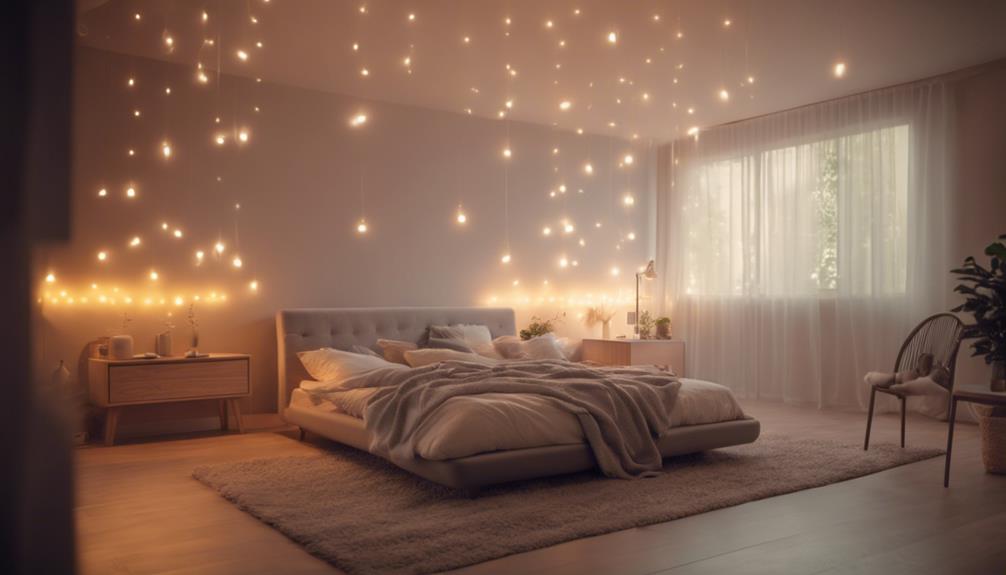
The efficient dissipation of heat generated by LED lights through metal heat sinks is a key factor in their low heat emission, contributing to cost efficiency and energy savings.
LED lights are designed to emit minimal heat, with a remarkable 95% of the energy they consume converted into light rather than heat. This efficient conversion process not only enhances energy efficiency but also reduces heat wastage, making LED lighting an environmentally friendly choice.
The heat generated by LEDs is effectively dissipated through metal heat sinks, ensuring that the lights operate at peak temperatures without overheating. This reduced heat emission leads to greater cost efficiency as less energy is lost to heat, resulting in significant energy savings over time.
Additionally, the minimal heat emitted by LED lights helps in lowering the energy load on cooling systems, further enhancing their overall energy efficiency and environmental protection efforts.
Quality Lighting
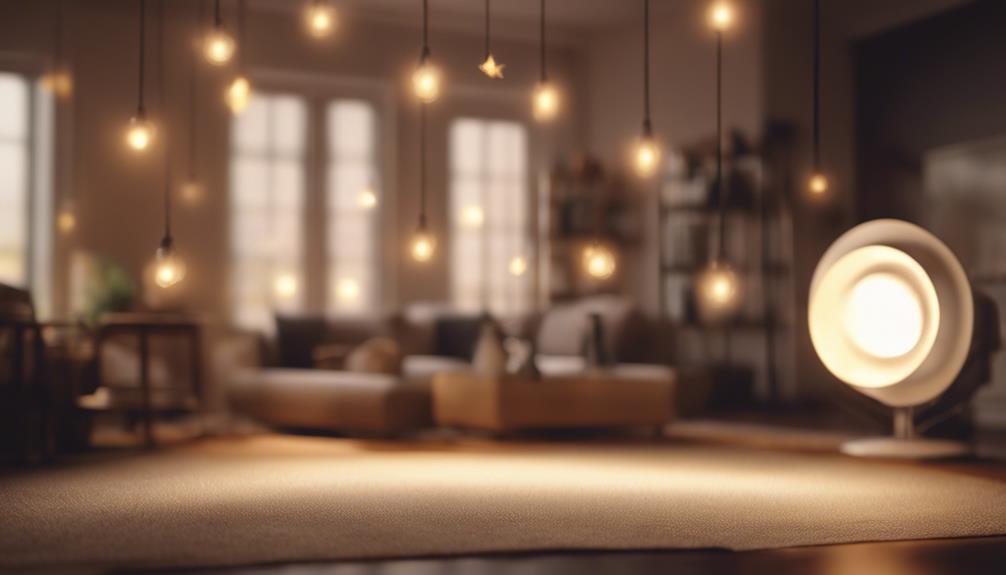
LED lighting stands out for its energy efficiency benefits. It provides high-quality illumination while consuming less power. Additionally, LEDs offer longevity and durability, lasting notably longer than traditional lighting options.
These factors combine to create a sustainable and cost-effective lighting solution for both residential and commercial spaces.
Energy Efficiency Benefits
Choosing LED strip lighting can greatly improve energy efficiency by saving up to 80% in energy costs compared to traditional lighting options. LED strip lighting offers superior energy efficiency, surpassing incandescent and halogen bulbs.
The efficiency of LED strip lights is such that they can still provide cost savings even after the initial investment. These lights offer quality lighting while consuming less energy, making them a cost-effective choice for various applications.
LED strip lighting is a sustainable option that promotes energy efficiency in different settings. The energy-efficient nature of LED strip lighting not only benefits the environment but also leads to significant savings in energy costs over time.
Longevity and Durability
With a rated life of up to 50,000 hours, LED lights demonstrate exceptional longevity and durability in various settings. LED lights greatly reduce the need for frequent bulb replacements, decreasing the disposal of old bulbs into landfills. Their durability makes them highly resistant to vibrations, impacts, and harsh weather conditions, ensuring a longer lifespan.
Additionally, LED lights are sealed and lack glass parts, minimizing the risk of serious injury and enhancing safety measures. These features not only contribute to reduced electronic waste but also have a positive impact on the environment. By choosing LED lights, individuals can enjoy quality lighting that lasts for years, providing both economic and environmental benefits.
Insect-Free Lighting

In outdoor settings, lighting with LED technology effectively repels insects due to its unique properties and specific light wavelengths. LED lights don't attract insects like traditional bulbs do, as they lack hot bulb surfaces that typically draw bugs.
The absence of ultraviolet light in LED lights plays an important role in reducing insect presence in outdoor areas. Specifically, the specific wavelengths emitted by LED lights deter bugs, making them an excellent choice for bug-free lighting solutions in gardens and other outdoor spaces.
LED lights not only contribute to creating a pleasant and insect-free environment but also enhance the aesthetic appeal of outdoor settings. By utilizing LED technology, individuals can enjoy well-lit outdoor areas without the nuisance of bugs hovering around light sources, making it a practical and eco-friendly choice for outdoor lighting needs.
Reduced Carbon Footprint
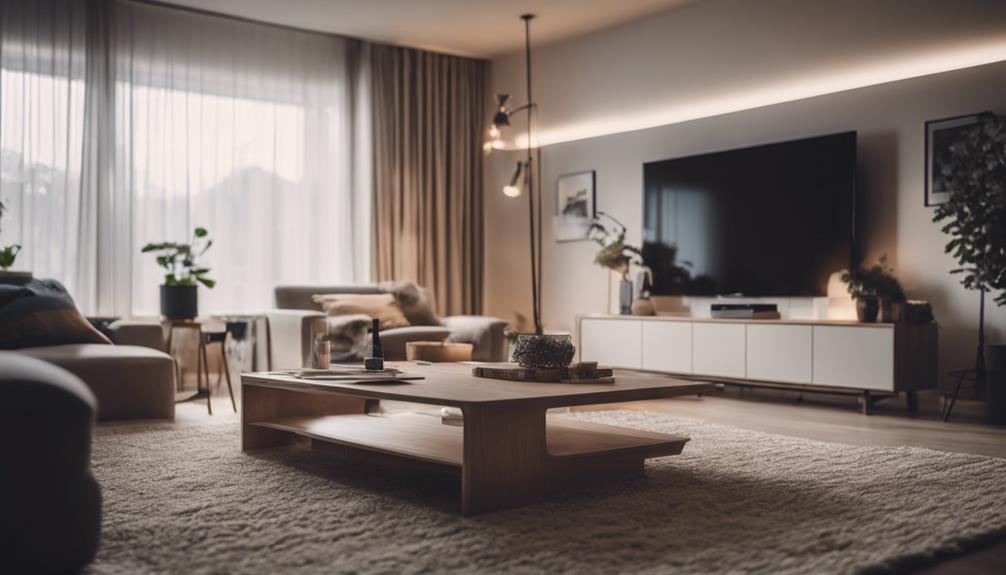
LED lighting offers an energy-efficient solution that greatly reduces electricity consumption.
By choosing LED lights, individuals can make a positive impact on the environment by lowering their carbon footprint.
This environmentally friendly option plays an important role in sustainability efforts across various sectors.
Energy-Efficient Lighting Option
Choosing energy-efficient lighting options greatly reduces carbon emissions and promotes a sustainable environment. LED lights are a key player in this effort, as they're up to 80% more energy-efficient than traditional lighting, effectively lowering greenhouse gas emissions.
LED lights excel in converting energy into light, with a remarkable 95% efficiency rate, minimizing wasted energy. By opting for LED lighting, individuals can markedly reduce their carbon footprint and contribute to a greener future.
Not only are LED lights environmentally friendly, but they also offer a cost-effective solution by providing long-term savings on electricity bills. Making the switch to LED lights is a practical and impactful step towards a more sustainable and energy-efficient world.
Lower Electricity Consumption
With a reduction of around 90% in electricity consumption compared to incandescent lights, LED lighting greatly lowers carbon footprint. LED lights are highly energy-efficient, leading to a significant decrease in electricity usage and greenhouse gas emissions.
By cutting down on energy consumption, LED lights help reduce the load on power plants and decrease fuel usage for electricity generation. Additionally, the directional nature of LED lights minimizes light pollution, making them an essential lighting choice for environmental sustainability.
Environmental Impact Reduction
By greatly reducing carbon emissions, environmentally friendly lighting solutions like LED lights play an essential role in mitigating environmental impact.
LEDs are a sustainable choice as they can decrease carbon emissions by up to 80% compared to traditional lighting sources. Switching to LED lights in households can lead to a significant reduction in CO2 emissions, contributing to a greener environment.
The energy efficiency of LEDs not only helps in lowering carbon footprints effectively but also plays an important role in sustainability initiatives. By emitting fewer greenhouse gases, LED lights actively participate in environmental impact reduction efforts.
Making the switch to LED lights is a practical and impactful way to reduce carbon footprints and promote a more sustainable future.
Frequently Asked Questions
Why Are LED Lights Environmentally Friendly?
LED lights are environmentally friendly due to their high energy efficiency, long lifespan, and lack of toxic elements like mercury. They require fewer replacements, reducing waste.
Their focused light distribution means less energy consumption for equivalent brightness levels. LED lights emit zero UV radiation, making them safer for people and materials.
How Much Do LED Lights Help the Environment?
LED lights greatly benefit the environment in several ways. They are up to 80% more energy-efficient than traditional lighting sources, leading to significant energy savings. Their longevity, lasting up to 50,000 hours, reduces waste and the need for frequent replacements. LED lights are also safer for people and materials as they emit zero UV emissions and are free of toxic elements like mercury.
Furthermore, LED lights are fully recyclable, making them a more sustainable lighting option. Additionally, their better light distribution means that fewer LED lights are needed, further reducing overall energy consumption and environmental impact.
What Are the Advantages of LED Lighting?
LED lighting offers numerous advantages. They're highly energy-efficient, lasting 30,000 to 50,000 hours. LED lights emit focused light, reducing light pollution. Their durability makes them resistant to impact and weather conditions.
Additionally, they don't attract insects. These qualities make LED lights a safe, long-lasting, and eco-friendly lighting solution for both indoor and outdoor settings.
How Can We Make Lights Eco-Friendly?
To make lights eco-friendly, one can opt for LED lighting. LED lights are energy-efficient, consuming 90% less electricity compared to incandescent lights. They also have a long lifespan of 30,000 to 50,000 hours, reducing the need for frequent replacements and waste.
LED lights don't contain harmful chemicals like mercury, making them environmentally safe. Their directional nature reduces light pollution by focusing light where it's needed.
Conclusion
To sum up, LED lighting is like a beacon of environmental responsibility, guiding us towards a brighter and more sustainable future. With its energy efficiency, long lifespan, and absence of toxic elements, LED lights shine as a symbol of eco-consciousness.
By choosing LED lighting, we can illuminate our spaces with both light and virtue, reducing our carbon footprint one bulb at a time. Make the switch to LED and light the way to a greener tomorrow.





